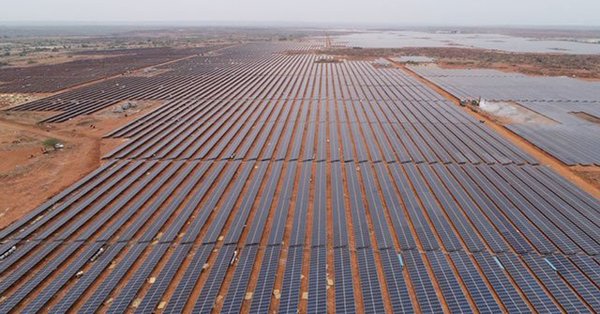Tariffs below Rs 2.55/kWh are financially unviable in the Indian solar sector under current market conditions—according to an analysis jointly undertaken by the U.S.-based Institute for Energy Economics and Financial Analysis (Ieefa) and JMK Research & Analytics.
The analysis found India’s solar tariffs have stabilised at Rs 2.50-2.87/kWh, 20-30% below the cost of existing thermal power in India, and up to half the price of new coal-fired power.
“While this rate is very competitive compared to thermal plant tariffs, and lucrative for power distribution companies entering long term power purchase agreements, this is a floor for developers if they want to make money,” said co-author Vibhuti Garg, an Ieefa energy economist, in a report on the findings.
“Developers have already reduced their return expectations from 14% to 12%, with tariffs being achieved as low as Rs2.5/kWh.”
Garg added developers must be mindful of all the parameters impacting tariffs when bidding.
Guiding factors
The Ieefa-JMK Research study compared domestic tariffs and the conditions enabling project returns, with the results juxtaposed against solar developer expectations.
Co-author Jyoti Gulia of JMK Research said conditions in India are very different to other energy markets, adding that interest rates, module costs, and capacity utilisation factors in particular have a major impact on solar tariffs and project returns.
“The cost of financing is a big element in determining tariffs and returns. Significantly higher interest rates in India compared to other leading renewable energy countries is one of the reasons for higher domestic tariffs. The zero indexation for the 25 year period is also a key value for India that is not explicit in the year 1 tariff,” Gulia said.
“The landed cost of imported modules at a time of currency devaluation is also adversely affecting tariffs, however this might be compensated with the falling module prices.
“Finally, capacity utilisation factors (CUF) differ across states in India, given significantly different solar resource qualities. Any drop in utilisation rates has a significant impact on project returns. As per our report findings, a 3% drop in CUF results in over 7% fall in equity returns.”
The authors found the Solar Energy Corporation of India (SECI) and NTPC played a key role in building international investor interest. Contractual certainty is in place with counter party and payment risk assurance from these central government agencies.
However, “To earn reasonable returns on project investments, it is crucial for project developers to factor in the risks and rightfully estimate the costs of every component,” said Garg.
The Ieefa-JMK Research findings are published in a report titled ‘Developers and Global Investors Snap Up India’s Solar Power Tenders: Decoding Tariffs vs Returns for Solar Projects in India.’
This content is protected by copyright and may not be reused. If you want to cooperate with us and would like to reuse some of our content, please contact: editors@pv-magazine.com.









Large Projects in India only “scratch the surface” and are not even the “Tip of the Iceberg” of Solar Energy on India.
• If these “Large Solar Projects” are built on Agricultural Land it will soon affect Food Production
• If built on Undeveloped Land but suitable for Agriculture…. it eliminates needed space for Future Needs or Growth….
• If built on Barren/Forest land…. it reduces the ability of the country from establishing Green Cover for Temperature Moderation, Forestry Resources (Wood, Plants, Wildlife etc..)… and even Recreation, besides destroying Tribal Peoples, Their Culture and Livelihoods too.
However…
• If AgriVoltaics is adopted on <<10% of the existing 2.2 Million km2 of Agricultural Land…. by using a DIRECT G2F (GOI to Farmer) $15-20 Trillion Partnership & Financing Model/ Arrangement. (Typically…. The Farmer, in the 650,000 Villages, keep ~40% Electricity Generated for "Dual-Use of their Land"… and GOI the Balance to Sell & Pay-Back their Investment).
• it can meet ALL ENERGY (not just Electricity) NEEDS of 15TW easily… within 10-15 years.
• Enable a ZERO POLLUTION OPTION for India in a decade or so and restore the Environment and Health of ALL.
• Bring Energy & Technology for Water, Food Processing (reducing waste) etc… to the Hinterlands
• Develop and Increase Incomes of Rural India by 2-500%… at least.
• Fire up the Urban/Industrial Economy… to "Feed the Fire" of the 15TW Solar Infrastructure and stop the Rural-Urban exodus that destroys BOTH RURAL AND URBAN SOCIETIES.
• Jump Start Electric Vehicles (Air, Battery, Hydrogen, etc..) & Transportation Manufacturing & Support Infrastructure
• "Jump the Gun" on converting ALL Polluting Industries to use Clean, Green & Sustsinable Technologies
• Generate at least $30-50Trillion worth of Economic Activity over /he next 10-15 years.
The World needs about 100-120TW… to do the same around the Globe…
POST COVID…. RENAISSANCE-II CAN BELONG TO ALL CHILDREN IN SCHOOLS… TODAY OR YET TO BE BORN…. UPTO US ONLY…
NO TECHNOLOGY OR RESOURCE LIMITATIONS…. JUST OUR WILL TO ACT & RESTORE OUR HEALTH AND ENVIRONMENT WITHIN A DECADE OR SO… LIKE THE GLOBAL WAR AGAINST…. COVID…